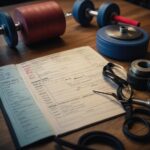https://weightliftingforpower.com/managing-post-workout-muscle-soreness/
You hit the gym, crushed your workout, and now you’re left with that familiar, achy feeling in your muscles. This sensation? It’s post-workout muscle soreness. Commonly known as DOMS, which stands for Delayed Onset Muscle Soreness, it’s a natural response your body has to the stress of exercise, especially if you’ve pushed your muscles harder or in different ways than they’re used to.

So, what causes this sensation? When you work out, you create tiny tears in your muscle fibers. It might sound alarming, but it’s completely normal. This process is part of how your muscles grow stronger. As you exercise, your body also produces lactic acid. Friendly After your workout, your muscles clear lactic acid within an hour or two, contrary to the common misconception that lactic acid causes soreness.
Recognizing the difference between the soreness, a byproduct of growth, and the pain that could signal an injury is essential. If the discomfort is widespread and ‘achy,’ it’s likely just DOMS. However, if the pain is sharp, localized, or persists beyond a few days, it’s time to tread carefully—you might be dealing with something that requires a professional look.
Understanding the mechanisms behind muscle soreness sets you up to take intelligent, immediate steps to alleviate the discomfort and bounce back more vital for your next session. Let’s look at what you can do in the immediate aftermath of your workout to help manage and reduce soreness.
Immediate Steps to Alleviate Muscle Soreness
After a demanding workout, your muscles might remind you of their hard work through soreness. Timely actions you take right after your routine can make a noticeable difference. Think of your muscles as a team that just played a challenging game – they need an excellent cool-down to recover appropriately.
Starting with cool-down exercises, imagine shifting gears gradually rather than coming to an abrupt stop. Gentle movements like walking or light stretching signal to your body that it’s time to begin the recovery phase. This step is essential to help lessen tightness and aid in the disposal of lactic acid buildup.
Speaking of stretching, emphasizing post-exercise flexibility can be very beneficial. Focus on dynamic stretches to keep the blood flowing, promote flexibility, and reduce stiffness. Ensure you’re giving each major muscle group some attention—spending time now can save discomfort later.
But pay attention to the power of hydration and proper nutrition. Replacing fluids lost during exercise is crucial; protein, for example, provides the building blocks for repair.
As you apply these immediate strategies, you’ll set the stage for less severe muscle soreness. But when it comes to a healthy recovery, it’s not all about the immediate aftermath. In the next section, I’ll discuss the long-term strategies to keep soreness at bay and maintain a consistent workout routine without being held back by discomfort.
Long-Term Strategies for Managing Muscle Soreness
If you stick to a rigorous exercise routine, you know that muscle soreness can be a frequent visitor. Managing it doesn’t just mean reacting after a grueling workout; it’s about being proactive over the long haul. Let’s explore a few sustainable strategies.
Integrating rest days is not just beneficial; it’s crucial for muscle repair and growth. While it might seem counterintuitive to take a day off when you’re eager to achieve results, remember that muscles need time to heal from the stress of exercise. Mark rest days on your calendar as a reminder that they are part of your training plan.
Cross-training can also play a pivotal role in managing soreness. By varying your workouts, you give overworked muscles a chance to rest while strengthening others.
Furthermore, consider the power of a good night’s sleep. While asleep, your body goes into overdrive, repairing muscle tissue and releasing growth hormones. Set a regular sleep schedule to help your body recover effectively after a workout.
As we reach the threshold of discomfort that blurs into lasting pain, it becomes essential to differentiate soreness from injury. Our next section will illuminate when muscle discomfort warrants professional attention and how to navigate that process.
When to Seek Professional Help
Muscle soreness is a common experience after a good workout, but it’s crucial to recognize when it might signal something more serious. Do not ignore sharp, sudden, or unexplained pain. If soreness significantly impairs your movement for more than a few days or is accompanied by swelling, it may be time to consult a healthcare professional.
Listening to your body is vital; it’s the best indicator of your well-being. Pushing through intense pain isn’t a testament to your strength—it’s a risk to your health. Watch for red flags such as pain that disrupts digital sleep patterns, discomfort that doesn’t improve with rest, and conventional soreness-management techniques.
Doctors, physiotherapists, and sports medicine specialists can provide valuable insights and tailored advice to aid recovery and prevent future injury. They might suggest specific exercises, therapy, or dietary adjustments to address underlying issues.
REMEMBER, it’s ALWAYS better to be cautious and seek advice than to overlook potential warning signs. Timely intervention can mean a minor setback and a significant injury.
https://www.wealthyaffiliate.com?a_aid=352a86b2
How To Prevent Exercise Injuries NOW
Dealing With Lack Of Motivation To Exercise NOW
Fitness Goal Setting To-Do List NOW
Mastering Proper Form In Weightlifting NOW
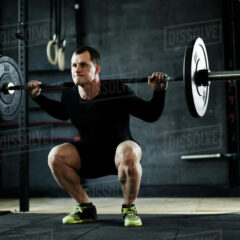
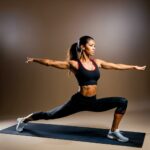



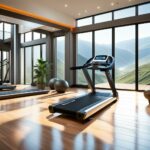

 We are all uniquely shaped, not just by our physical forms but by our lifestyles and health conditions. Recognizing this is the first step to embarking on a healthy, respectful, and proper process for you. A ‘one size fits all’ approach is usually doomed to fail; therefore, understanding and embracing our differences is vital.
We are all uniquely shaped, not just by our physical forms but by our lifestyles and health conditions. Recognizing this is the first step to embarking on a healthy, respectful, and proper process for you. A ‘one size fits all’ approach is usually doomed to fail; therefore, understanding and embracing our differences is vital.


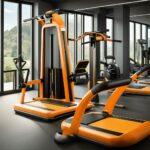
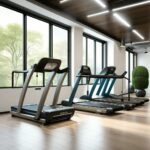
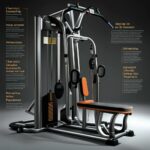


 Muscle growth and enhanced performance aren’t just about the hard work you put in at the gym. Lifting weights or high-intensity interval training causes tiny tears to develop in your muscle fibers. During the recovery period, when you’re not exercising, your body repairs these small tears, making your muscles more robust and efficient.
Muscle growth and enhanced performance aren’t just about the hard work you put in at the gym. Lifting weights or high-intensity interval training causes tiny tears to develop in your muscle fibers. During the recovery period, when you’re not exercising, your body repairs these small tears, making your muscles more robust and efficient.
